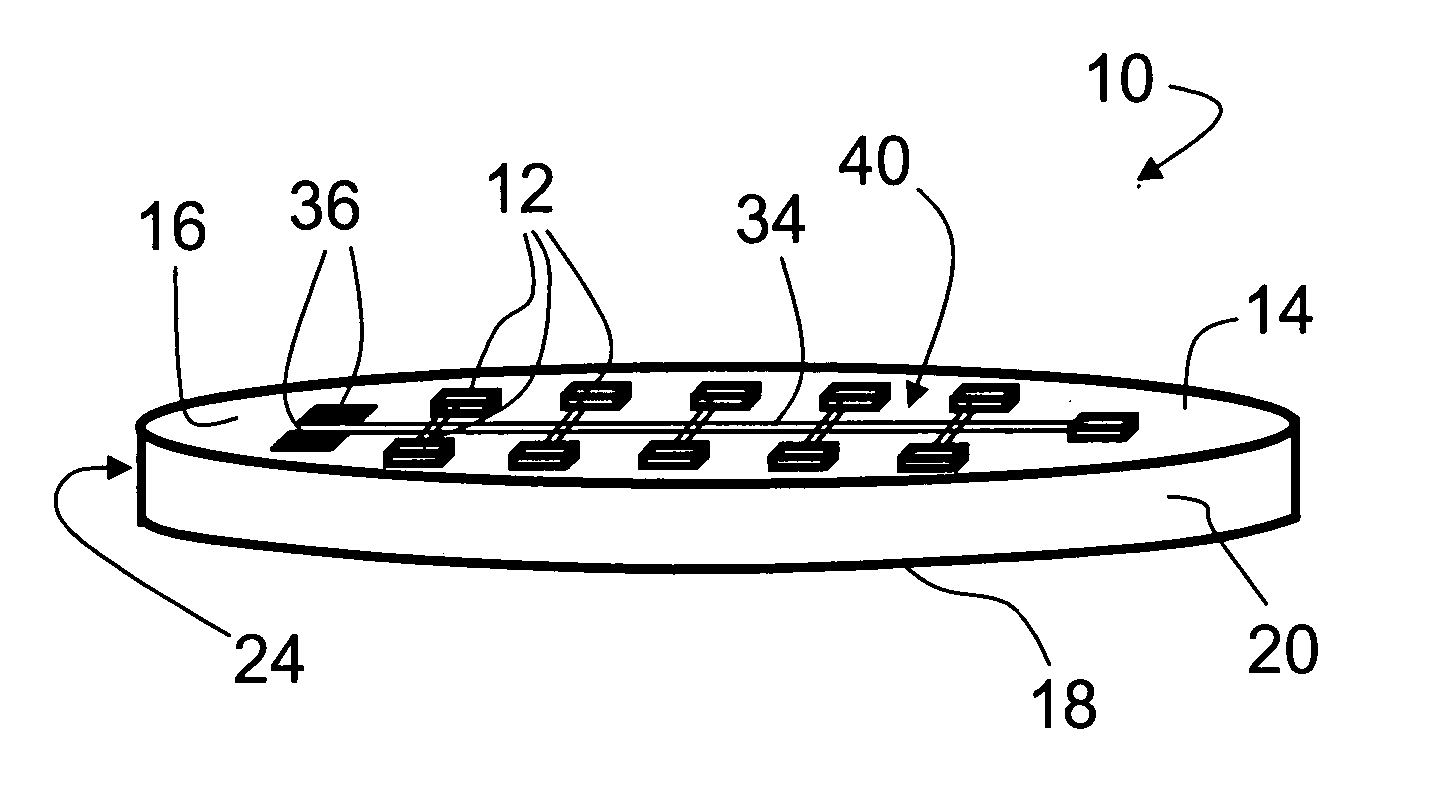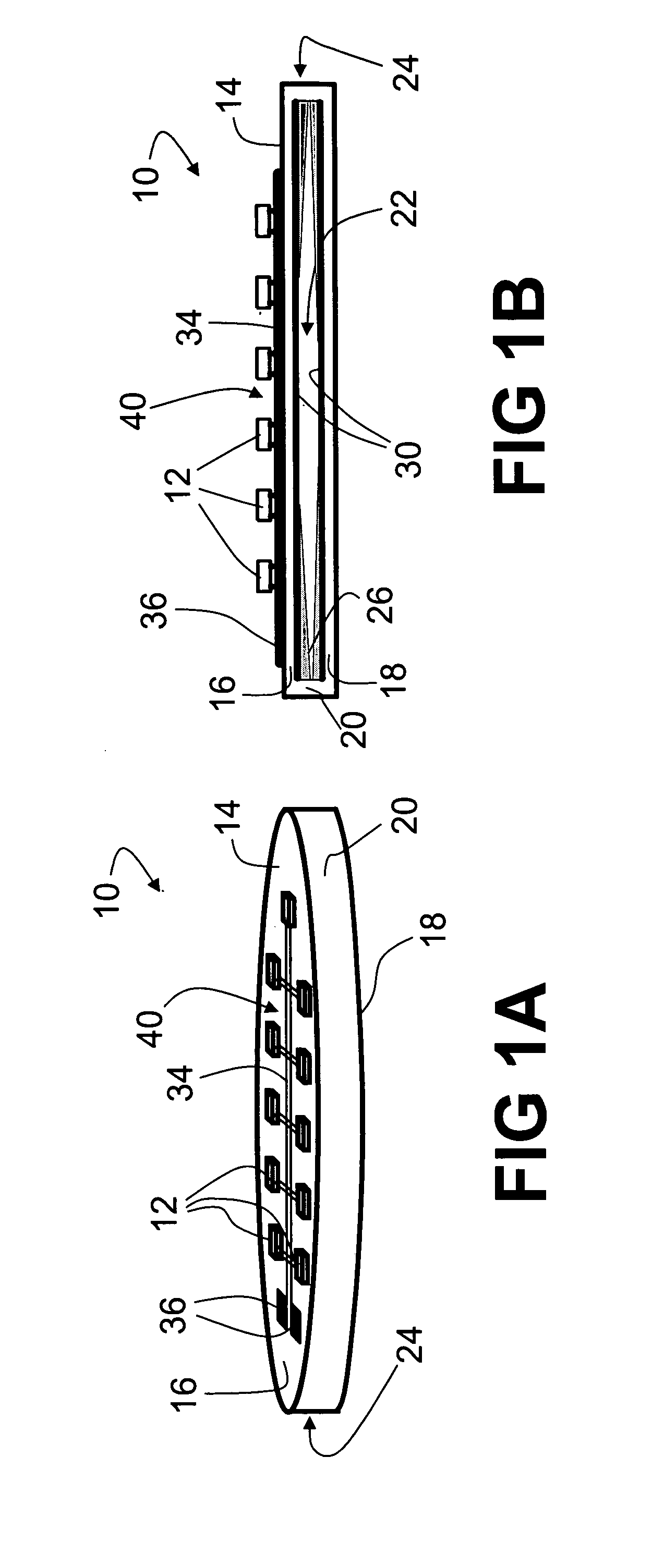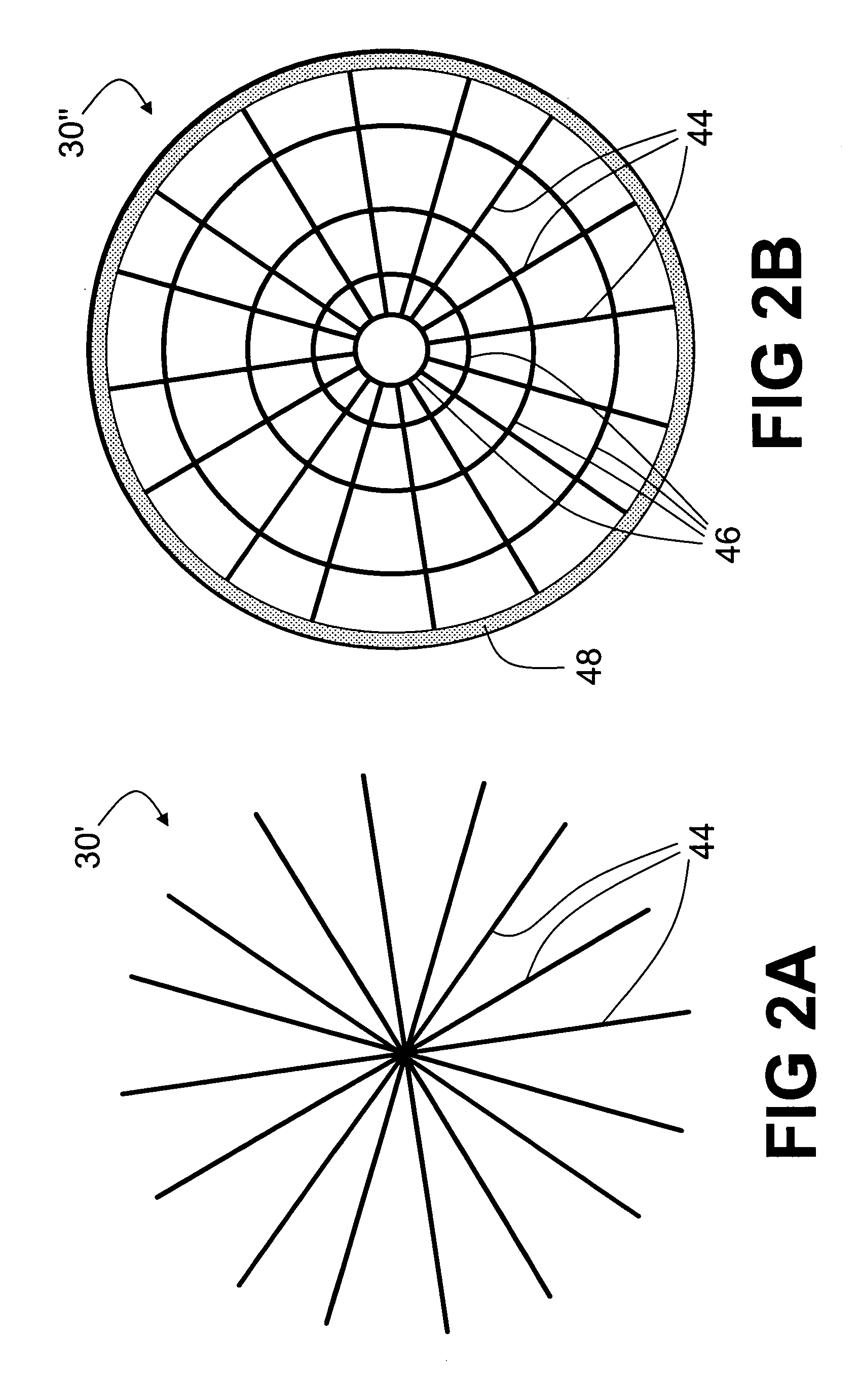Light emitting diode apparatuses with heat pipes for thermal management
a technology of light-emitting diodes and heat pipes, which is applied in lighting and heating apparatuses, semiconductor devices for light sources, and semiconductor/solid-state device details. it can solve the problems of resistive elements, high resistive losses in cladding layers, electrodes, printed circuit traces,
- Summary
- Abstract
- Description
- Claims
- Application Information
AI Technical Summary
Benefits of technology
Problems solved by technology
Method used
Image
Examples
Embodiment Construction
[0022] With reference to FIG. 1, a light emitting package 10 includes a plurality of light emitting diode devices 12 disposed on a generally planar support 14 having a generally circular lateral area. The support 14 includes a first principal wall 16 on which the light emitting diode devices 12 are disposed, a second principal wall 18 opposite the first principal wall 16, and an annular sidewall 20 connecting the first and second principal walls 16, 18 to define a sealed interior volume 22 of a generally planar heat pipe 24. The sealed interior volume 22 is substantially defined by a gap between the first and second principal walls 16, 18. The principal walls 16, 18 preferably have lateral areas larger than the gap between the principal walls 16, 18, so that the support 14 is generally planar with a lateral area larger than its thickness.
[0023] A heat transfer fluid 26 such as water, methanol, or the like, is disposed in the interior volume 22. In FIG. 1 as well as in the other dra...
PUM
| Property | Measurement | Unit |
|---|---|---|
| operating voltage | aaaaa | aaaaa |
| temperature | aaaaa | aaaaa |
| temperature | aaaaa | aaaaa |
Abstract
Description
Claims
Application Information
 Login to View More
Login to View More - R&D
- Intellectual Property
- Life Sciences
- Materials
- Tech Scout
- Unparalleled Data Quality
- Higher Quality Content
- 60% Fewer Hallucinations
Browse by: Latest US Patents, China's latest patents, Technical Efficacy Thesaurus, Application Domain, Technology Topic, Popular Technical Reports.
© 2025 PatSnap. All rights reserved.Legal|Privacy policy|Modern Slavery Act Transparency Statement|Sitemap|About US| Contact US: help@patsnap.com



